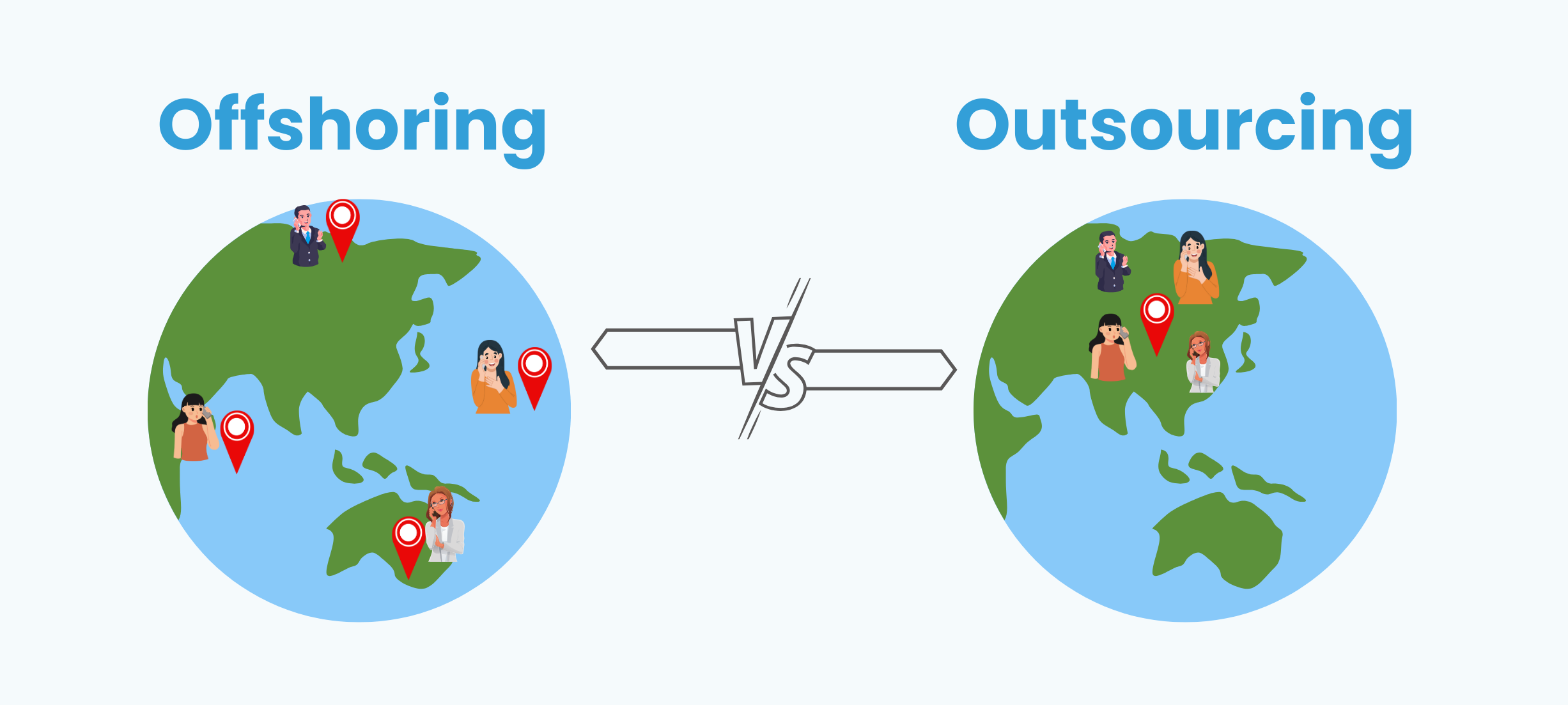Even though the 2017 Tax Cuts and Jobs Act made some changes, the existing regulations still push American multinational companies to make and declare profits in countries with low taxes. This applies to both U.S. and foreign companies, allowing them to move the profits they make in the United States to other countries. Additionally, these rules promote companies to establish themselves in foreign locations, contributing to the complexities of U.S. international tax.
The evolution of the U.S. international tax system
As a response to the widespread issue of base erosion and profit shifting, the USA tax authorities have implemented significant reforms. These changes aim to close loopholes, enhance transparency, and ensure that multinational corporations contribute their fair share of taxes. The goal is to prevent the erosion of the tax base and protect government revenues, fostering a more equitable and competitive global tax environment. These USA tax adjustments mark a crucial step in addressing the challenges posed by aggressive tax planning strategies employed by multinational corporations.
In 2017, the Biden administration took a bold step. They spearheaded a two-pillar international tax reform aimed at leveling the playing field and ensuring MNEs pay their fair share.
New U.S. international tax impact
Pillar One: Realigning profits with market jurisdiction
Impact:
- Shifting tax rights: MNEs with global revenues exceeding $10 billion now face reallocation of taxing rights based on “market jurisdiction.” This means profits generated in the US, even through online sales, are taxed here, regardless of the MNE’s physical presence.
- Early estimates: While full implementation is ongoing, the OECD projects Pillar One could generate over $20 billion in additional tax revenue for the US annually.
- Challenges: Determining how profits are allocated across borders remains complex, and some worry about potential double taxation. Further refinements and international cooperation are necessary.
Pillar Two: Setting a global minimum tax floor
Impact:
- Minimum tax rate: Introduces a 15% global minimum tax rate. If an MNE’s effective tax rate in any jurisdiction falls below 15%, the US can apply a “top-up” tax to ensure its minimum global tax burden.
- Impact on US competitiveness: Some US companies with overseas operations might face slightly higher tax bills, but overall, the system levels the playing field with foreign competitors who benefit from low-tax havens.
- Potential trade disputes: While Pillar Two aims for global adoption, some countries with low tax rates might resist, possibly leading to trade tensions.
Overall impact
The U.S. international tax reform is still in its early stages, but its potential impact is significant. While challenges and concerns remain, the system has the potential to:
- Increase US tax revenue: The US treasury estimates pillar two alone could generate $320 billion in new revenue over the next decade.
- Level the playing field: MNEs will face a fairer tax burden, reducing incentives for profit shifting and unhealthy tax competition with countries offering tax havens.
- Promote investment transparency: Increased tax transparency could boost investor confidence and encourage responsible corporate behavior.
Yet, the new system’s success depends on a few key factors:
- Widespread international adoption: Pillars One and Two require global coordination and implementation to truly be effective.
- Addressing implementation challenges: Complexities in determining profit allocation and potential loopholes need to be addressed.
- Mitigating trade disputes: Open dialogue and collaborative efforts are crucial to avoid trade frictions with countries hesitant to adopt the minimum tax.
The U.S. international tax reform marks a significant step toward a fairer and more transparent global tax system. While its full impact remains to be seen, its potential to increase revenue, level the playing field, and promote responsible corporate behavior offers a promising path forward for the US and the global economy.
Insights into the impact of U.S. international tax reforms
Individuals
- Potential for higher public services: Pillar Two could generate billions in additional tax revenue for the US, potentially translating into improved infrastructure like modernized roads and bridges, upgraded educational facilities with enhanced resources, and expanded access to high-quality healthcare services. This could impact everyone positively, from students and commuters to families and senior citizens.
- More complex reporting: For individuals with cross-border investments or businesses, the new rules might necessitate stricter reporting requirements. This could involve navigating more intricate tax forms, potentially requiring professional assistance to ensure compliance.
Businesses
Profit shifting restrictions: The era of MNEs effortlessly parking profits in low-tax havens is over. Pillar One reallocates taxing rights based on where profits are generated, potentially leading to higher tax bills for some MNEs operating in the US. This could affect dividend payouts and stock prices, requiring companies to strategically adjust their operations and financial planning.
Level playing field: Smaller businesses, historically disadvantaged by MNEs benefiting from lax offshore tax havens, could find a fairer competitive landscape under the new system. With MNEs facing a more unified global tax structure, particularly within the U.S. income tax structure, smaller businesses operating domestically might experience improved market access and growth opportunities.
Compliance costs: Adapting to the new regulations will come with additional administrative burdens, particularly for larger businesses with complex global operations. Implementing new accounting systems, training staff on compliance procedures, and potentially restructuring business models all contribute to increased compliance costs.
Global Economy
- Reduced tax competition: The global minimum tax rate of 15% aims to curb the “race to the bottom” where countries compete for investment by offering the lowest tax rates. This could lead to a more stable and predictable global tax environment, fostering fairer competition and potentially stabilizing international trade agreements.
- Transparency boost: Increased information sharing between countries under the new system could make tax practices more transparent, making it harder for companies and individuals to engage in tax evasion. This could boost investor confidence in the global economy and encourage responsible corporate behavior.
- Uncertainty in the long run: While the potential benefits of the new system are promising, the long-term impact on factors like investment, innovation, and economic growth remains unclear. Careful monitoring and analysis are crucial to assess the full ramifications of the reforms and make necessary adjustments in the future.
Staying ahead of the curve
In this evolving landscape, knowledge is truly power. Here are some steps to navigate the new terrain with confidence:
- Seek tax professional guidance: Consult a qualified tax advisor to understand how the new system specifically affects you, whether as an individual or a business owner. At BookkeeperLive, we offer specialized individual income tax services to provide personalized guidance tailored to your unique financial situation.
- Stay informed: Keep yourself updated on the latest developments and interpretations of the regulations. Subscribe to relevant news sources and attend industry events to stay ahead of the curve.
- Embrace transparency: Ensure your business practices comply with the new rules to avoid any potential consequences. Open communication and proactive compliance will be key to successful adaptation.
By delving deeper into the intricate details of the US international tax reforms, you can equip yourself with the tools and knowledge to navigate the new landscape with confidence. Remember, this information is for general knowledge only and should not be considered tax advice. Always seek professional guidance for personalized strategies and ensure compliance with the specific regulations.
How big companies move profits to low-tax countries?
Big companies that operate in different countries often have a way to make more money by cleverly handling their profits and taxes. They have subsidiaries (like smaller companies they own) in places where the taxes are very low. These subsidiaries are treated as separate companies, which allows the big company to move their profits around to pay less tax.
Here’s how they do it: Imagine you have a product, like a new phone, and you sell it to your own subsidiary in a country where taxes are super low, let’s say Ireland. You sell it to them for a price that’s lower than what you’d sell it for to a regular customer. This way, the profits from selling the phone get recorded in Ireland, where taxes are low.
On the other side, if you need something for your business, like a patent for your new phone, you might buy it from another subsidiary in a tax-free place like Bermuda. And you’d pay a higher price for it than you normally would. This way, you move some of your profits to the tax-free place.
Before a law called the Tax Cuts and Jobs Act in 2017, many big American companies were doing this a lot. In 2017, more than 40% of their profits made outside the U.S. were reported in just three low-tax countries: the Netherlands, Ireland, and Luxembourg. They also used other low-tax places like Bermuda, Switzerland, Singapore, the UK Caribbean Islands, and the United Kingdom to make up over 80% of their profits outside the U.S.
So, basically, these big companies found ways to make it look like they made a lot of money in places where they don’t have to pay much in taxes.
Why some companies choose to set up overseas?
In the United States, a company is considered a ‘resident’ based on where it’s officially incorporated. This rule doesn’t always match where the company’s business does, sells its products, or has its employees and managers.
Some companies take advantage of this by moving the official registration (incorporation) of their main company overseas. This is called ‘inversion.’ It’s a way to get tax benefits without changing where the real business happens.
The government has tried to stop this by making rules against inversions. But companies can still move their registration by merging with a foreign company in certain ways. The tax laws changed in 2017 to make it harder for companies to do this, but some still find ways around it.
The US tax system still gives companies reasons to set up their main office outside the US. Even with the new, lower corporate tax rate, there are still advantages for some big companies. The US now taxes the profits that US-based companies make in low-tax countries, while other countries often don’t tax these kinds of profits.
The US government has also put in some new rules to stop companies from using certain tricks to move their profits out of the country. One rule tries to limit the interest payments that companies can make to foreign partners. Another rule, called BEAT, puts a minimum tax on certain payments to foreign partners, like interest.
But in a world where companies do business all over the globe, where a company’s main office is located might not be as important as where they invest, create jobs, do research, and make sales. For tax purposes, however, company tax services can help navigate the complexities of this globalized landscape and determine the most advantageous location for a company’s headquarters based on its specific activity and tax implications.
Conclusion
The new U.S. international tax system is a complex beast, filled with both challenges and opportunities for multinational corporations. While navigating its intricacies can be daunting, understanding its impact is crucial for informed decision-making and future success.
This is where BookkeeperLive, your trusted accounting and tax preparation service, comes in. We understand the complexities of the new system and are equipped to guide you through its challenges. Our team of experienced tax consultant can:
- Analyze your global operations and identify potential tax optimization strategies.
- Ensure compliance with all relevant regulations and filing requirements.
- Prepare accurate and timely international tax returns.
- Provide ongoing support and guidance as the tax landscape evolves.
With BookkeeperLive by your side, you can navigate the new U.S. international tax system with confidence, ensuring your multinational corporation thrives in the ever-changing global marketplace.
Don’t let the intricacies of international tax hold you back. Contact BookkeeperLive today and let us help you optimize your tax strategy for maximum success.
FAQs
1. How does the GILTI tax affect my multinational corporation?
The GILTI tax applies a minimum 10.5% tax (increasing to 13.125% in 2026) on certain intangible income earned in low-tax countries by US-resident corporations. This means less opportunity to shift profits offshore for tax savings.
2. Does the new system make it harder to “invert” my company overseas?
Yes, the system includes penalties like a 35% transition tax on overseas assets of newly inverted companies. Additionally, dividends to shareholders become taxable as ordinary income, making inversions less attractive.
3. Who benefits most from the lower corporate tax rate?
US-based companies without significant foreign operations see the biggest direct benefit from the reduced 21% corporate tax rate. However, all companies stand to gain from a more level playing field compared to foreign competitors.
4. Will my international tax compliance become more complex?
Unfortunately, yes. New regulations add reporting requirements and compliance steps. If you are also looking for tax help, then schedule a meeting with our experts at BookkeeperLive.
5. How can I optimize my tax strategy under the new system?
A thorough review of your global operations and income streams is crucial. BookkeeperLive can help identify tax optimization opportunities within the new system’s framework.








